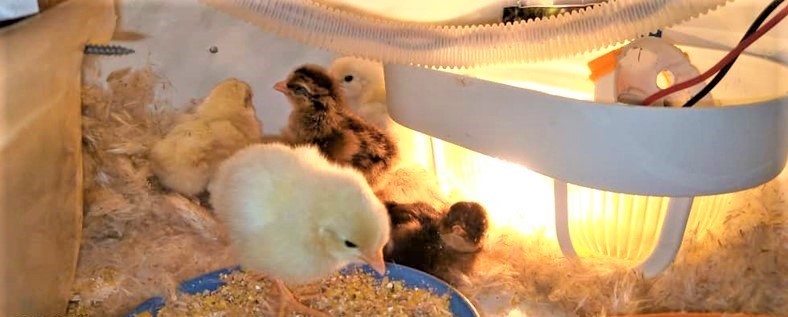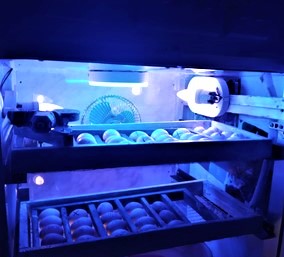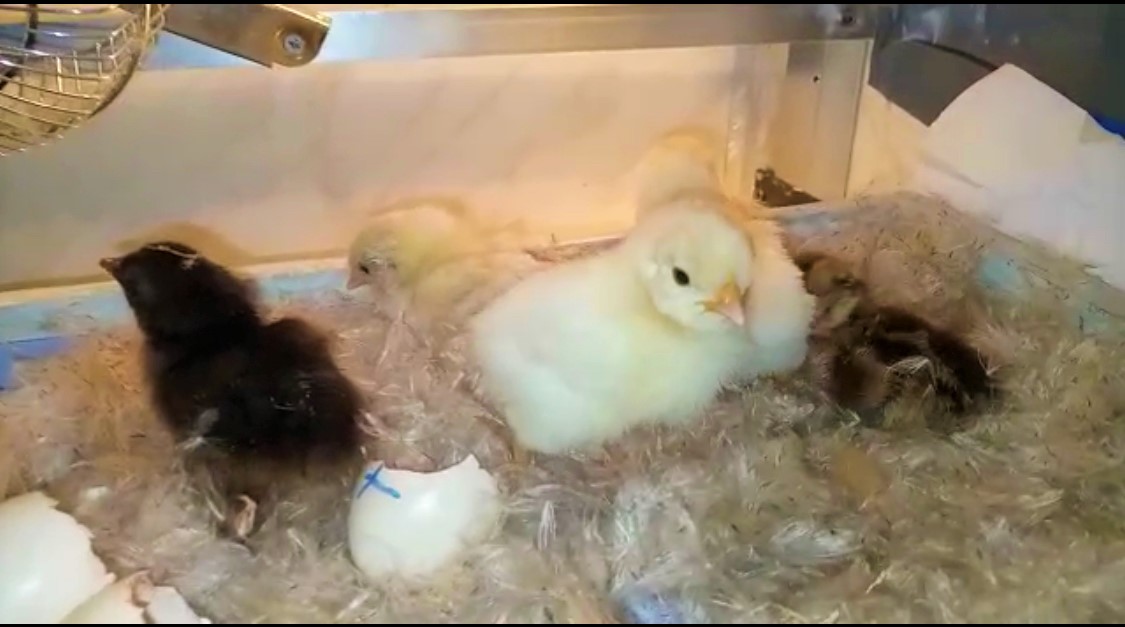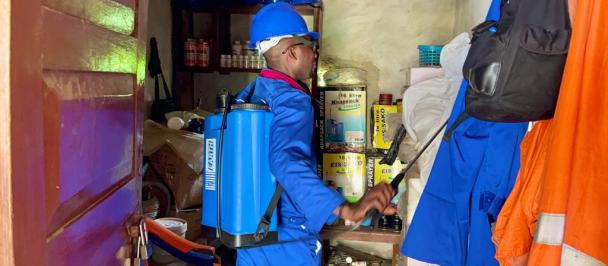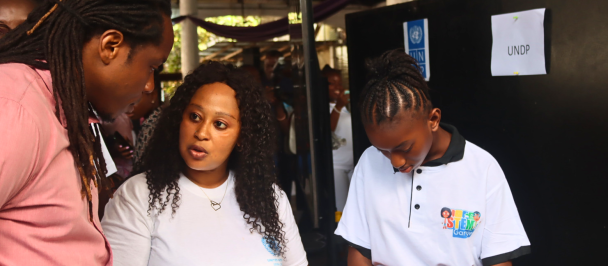Accelerator Lab (Tuzlyn Bayoh Head of Experimentation, Akinyemi Scott-Boyle Head of Solutions Mapping and Benjamin Rogers Head of Exploration) Adamu Sanidanya FAO Specialist; Martin Dainbaquee- Innovator
If the second main source of animal protein for a population of 7.977 million people (in 2020) is coming from poultry products such as eggs, and meat, and that the domestic production cannot meet 50% of that demand, then, this protein demand gap can either create an ideal environment for exploitation by poultry farmers or can act as a catalyst to provoke actions towards closing the gap sustainably.
Now poultry production is a common practice in Sierra Leone that contributes significantly to enhancing the livelihood, and economic and socio-cultural well-being of many local farmers. And according to researchers, there is a vast potential for the poultry sector to thrive in Sierra Leone with the capacity to meet and even exceed the local demand as it is already the largest livestock reared in Sierra Leone[1]. Again, we know that for this sector to thrive as forecasted, certain fundamental pillars must be in place for an ideal ecosystem which is not the case as there are several challenges along the value chain that limit this expansion. FAO in Sierra Leone, like other partners, has been working with the Ministry of Agriculture and Food Security and poultry farmers nationwide to strengthen weak areas within the local ecosystem from the initial point of acquiring quality day-old chicks for egg production as support given to vulnerable farmers in the rural areas across the country to increase their income and as well as improve their nutrition status. In this blog, we will be focusing on one of the major challenges faced by small-scale commercial farmers and explore how innovation, especially locally driven solutions, can contribute to business and national development.
In recent years there has been a growing interest in commercial poultry enterprise (CPE) investment however, up to 50% of these CPEs are considered small-scale farmers with stock of between 1 to 1000 birds. And one of the major deterrents to the growth of these small-scale commercial farmers is the importation of day-old chicks to sustain the production cycle due to the unavailability of the functional hatchery in the country.
This periodic restocking process also entails its levels of risk and inconveniences, especially for small-scale commercial farmers who, because of restrictions such as minimum order policy by suppliers and limited knowledge and exposure to foreign transactions, these farmers must process restock requests through large farms that serve as aggregators.
This process must be planned in detail, as orders are to be submitted in time for allocations to be made and the first dose of vaccines to be administered to the chicks before they are airfreighted to Sierra Leone for immediate transport to their destination. During this process, mortality occurs, which is an additional loss borne by the farmers. This cycle needs to be broken for small-scale commercial farmers to grow and progressively reduce the high dependency on the importation of day-old chicks.
The Experiment
Small-scale commercial poultry farmers have been trying to address this issue of importation of day-old chicks for quite some time now. For a brief while, a handful of farmers succeeded in importing hatcheries which enabled them to increase their stock significantly, but this was not sustainable because of limited knowledge in doing routine maintenance and operation of these machines, which eventually made them unfit for use.
In the interest of finding a sustainable option to reduce production cost on small-scale commercial poultry farmers, especially for day-old chicks, UNDP, through the local innovation grassroots mapping mechanism identified a disruptive solution that might have huge impact potential. After a series of engagements with FAO and other key partners such as Limkokwing and Njala Universities, the Ministry of Agriculture and Forestry and the Directorate of Science, Technology, and Innovation (DSTI), UNDP provided prototype development funds for the building of Sierra Leone’s first rechargeable hatchery, a unit that can accommodate 32 eggs.
For this maiden test, the prototype was deployed at a poultry farm in Kono to assess performance. From crossbreeding a local breed hen with an improved breed cock, 19 eggs were laid and introduced into the unit for hatching. After 4 sets of candling, 10 eggs were identified as fertile, and 10 hatched successfully. These chicks were transferred into the brooding chamber.
Observations and Learnings
It was observed that:
- Incubation period was 21 days
- Inconsistent power supply was adequately solved by the clean energy source component
- Survival rate of the first batch of poultry eggs was 52.6% (though other factors can also influence survival)
- Additional design recommendations were provided by experts that are to be incorporated in subsequent versions.
The Future
With this first experiment cycle completed, further investments can now be made to expand the scope of the second cycle to include between 4 to 10 local small-scale commercial farmers to monitor the impact on productivity levels over a specific period. Now assuming this second cycle of experiment results are successful, then;
- The solution can be replicated further and sold for affordable prices to all small-scale commercial farmers, leading to a significant increase in their production levels and their ability to maintain a sustainable production cycle.
- Dependency on the importation of day-old chicks and all its related risks will gradually reduce, increasing savings for local farmers.
On the other hand, the young innovator becomes a manufacturer who can;
- Contributes to national revenue generations by undergoing a formalization process and periodic payment of taxes to a manufacturing business.
- Contributes to improving the living conditions of others by increasing his manufacturing team, creating job opportunities for more young people.
- Contribute to several SDGs
So, our path to scale is not a one-size-fits-all approach but a tailormade, considering the local context need, product, and producer readiness to take on the market. That is why our new approach is a pacesetter for other partners not just to identify these young innovators with high impact solutions and showcase them but also further guide them through the various stages of the product development cycle, equipping them with entrepreneurship and digital skills to prepare them for their entrepreneurship journey.
The possibilities for this solution and others mapped along the poultry value chain are endless that can contribute to locally addressing the pain points within this ecosystem, allowing increased productivity and growth for small-scale commercial farmers.

 Locations
Locations